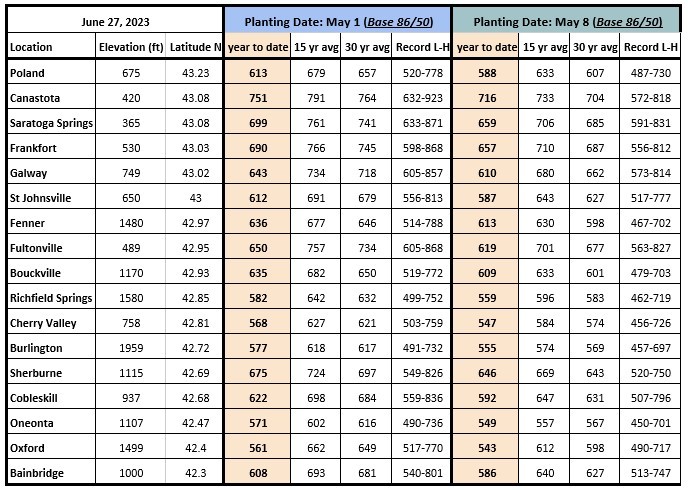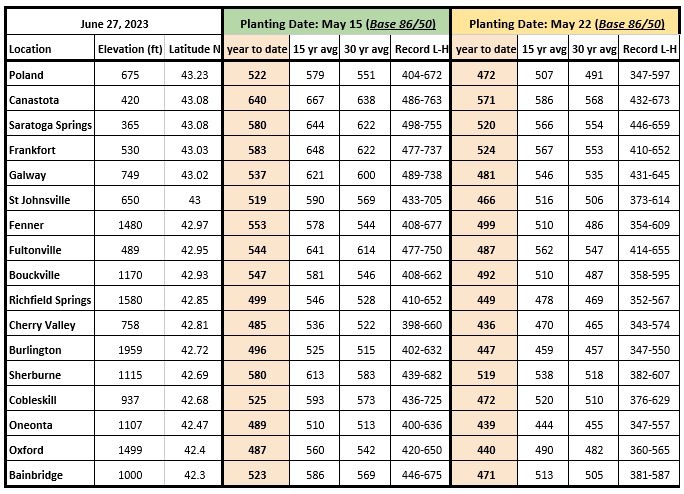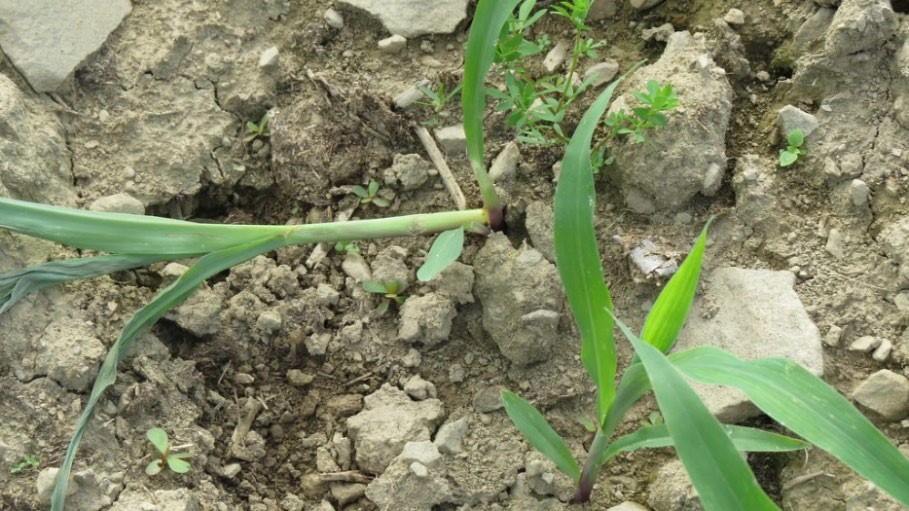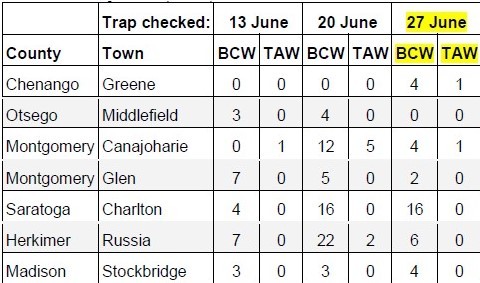Field Crop Update, June 29, 2023
Erik Smith, Area Field Crop Specialist
Central New York Dairy and Field Crops
1. Field Observations
Winter grains are reaching maturity, and everyone is crossing their fingers that this recent bit of wet weather will not lead to pre-harvest sprouting. The 10-day forecast has some much-needed heat (see our lack of heat in section 2), but more of the highly-unpredictable scattered thunderstorms. The uneven corn emergence is finally revealing how much seed is never going to come out of the ground, and canopy closure is rapidly approaching. No growing season is easy, but this one has thrown just about everything at us - and it's still June….
We've seen more cutworm damage this year than in recent years, but nothing above threshold (that I've seen). Potato leafhopper numbers are still well-below thresholds (and are all but absent in every field I've sampled), but stay tuned to Section 3 in the coming weeks to see if that changes.
2. Growing Degree Days (See: Climate Smart Farming Growing Degree Day Calculator)
Growing degree days (GDD) are calculated by taking the average daily temperature and subtracting the base temperature for development of a given organism ((High + Low)/2 - base temp = GDD). For corn silage, we are using base 50/86, as corn development starts at 50 degrees F and ceases above 86. Check your location and planting date:


3. Pest and disease monitoring
Potato Leafhopper
Alfalfa weevil season is finally over! There are a lot of aphids out there, but there seem to be just as many ladybugs and other predators. And thankfully, we are still seeing very few leafhoppers (far below threshold). When we have more numbers to report, we'll add that data table here.
Black Cutworm (BCW) and True Armyworm (TAW)
Numbers have largely dropped this week, and next week will be the last recording of BCW and TAW this year. Starting two weeks from now, we will begin reporting Western Bean Cutworm (WBC) and Fall Armyworm (FAW).


Upcoming Events
New York State Fiber Conference
June 9, 2024
Bouckville, NY
Theme for this year: Quality Matters
Announcements
Cash Rent and Custom Harvest Survey
To date, there is limited information available about rental rates and fees for crop harvesting. Farms can use this valuable information for their farm business planning to help improve decision making and profitability.Farmers Can Join MeatSuite For Free!
MeatSuite.com is a free resource provided by Cornell University where NY meat farmers can create a farm profile and list their bulk (wholes, halves, quarters) and bundled (i.e. Grilling Bundle) meat products.Why should farmers join?
1. It's free and easy!
2. Connect with more local customers. In the past year the MeatSuite.com farm directory had 8,300 visits from New York consumers. Farm profiles get as many as 25 views per month from potential local customers. We also spotlight MeatSuite farms on social media and bring attention and purchases to farms through highlights and giveaways.
How do I join?
Farmers can visit https://www.meatsuite.com/farmers/ to create a free farm profile. You must list at least one product for your farm's profile to go live. You'll also have access to Cornell's free Meat Price Calculator, a helpful tool for pricing your meat to make a profit.
While you're on MeatSuite, check out the "Creating Consumer-Friendly Bulk Meats" publication on the log-in page. It has tips on how to create bulk meat products that are easier for first-time buyers to say "yes" to.
If you have any questions as you create your farm profile or products, we're here to help! Please email Matt LeRoux at mnl28@cornell.edu.




